My Poem of the Month: A Celebration of this Sweet and Merry Month of May
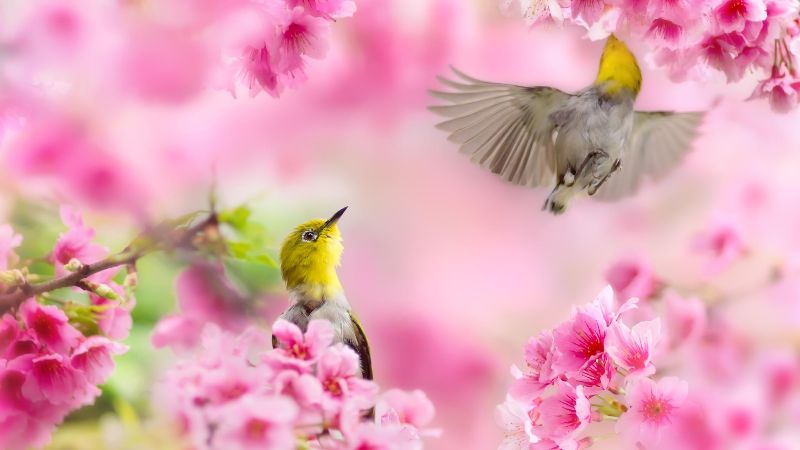
Photo: Facebook
The world wakes up in springtime. Having been dark and cold through the winter months, suddenly flowers are blooming, birds are singing, the days are getting brighter, and sunshine is beautifully warmer —and inviting action, inspiration and commitments to fresh starts in each of us.
What better way to sing the praises of Spring’s arrival and to embrace the positive, hopeful nature of spring and the hopeful message of May than to read beautiful poetry.
In May
‘Yes, I will spend the livelong day
With Nature in this month of May;
And sit beneath the trees, and share
My bread with birds whose homes are there;
While cows lie down to eat, and sheep
Stand to their necks in grass so deep;
While birds do sing with all their might,
As though they felt the earth in flight.
This is the hour I dreamed of, when
I sat surrounded by poor men;
And thought of how the Arab sat
Alone at evening, gazing at
The stars that bubbled in clear skies;
And of young dreamers, when their eyes
Enjoyed methought a precious boon
In the adventures of the Moon
Whose light, behind the Clouds' dark bars,
Searched for her stolen flocks of stars.
When I, hemmed in by wrecks of men,
Thought of some lonely cottage then
Full of sweet books; and miles of sea,
With passing ships, in front of me;
And having, on the other hand,
A flowery, green, bird-singing land.’- William Henry Davies
Ode, Composed On A May Morning
By one of my most favorite poets and teacher, William Wordsworth

Photo; pinterest
'While from the purpling east departs
The star that led the dawn,
Blithe Flora from her couch upstarts,
For May is on the lawn.
A quickening hope, a freshening glee,
Foreran the expected Power,
Whose first-drawn breath, from bush and tree,
Shakes off that pearly shower.
All Nature welcomes Her whose sway
Tempers the year's extremes;
Who scattereth lustres o'er noon-day,
Like morning's dewy gleams;
While mellow warble, sprightly trill,
The tremulous heart excite;
And hums the balmy air to still
The balance of delight..'-Ode, Composed On A May Morning
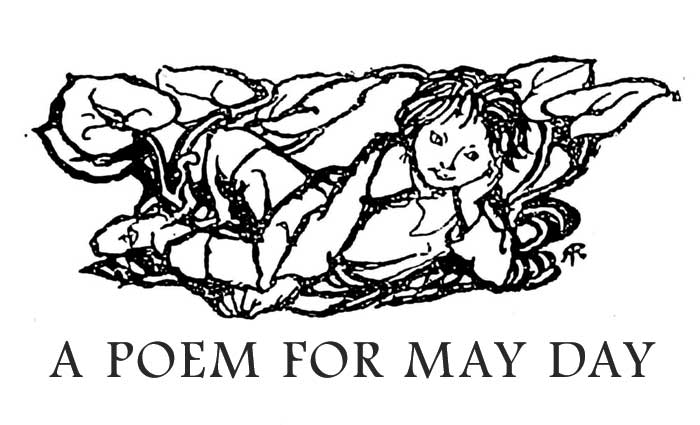
Photo: Pook Press
Steeped in folklore magic, May Day marks the halfway point between the spring equinox and summer solstice.
‘May 1st has been celebrated for thousands of years. The earliest known celebrations of May are Floralia – the festival of Flora, celebrating the Roman Goddess of flowers during the Roman Republic era. Throughout history, the celebration’s theme lies in that of fertility, nature and the summer season, with the Celtic celebration Beltane (translating to ‘lucky fire’) blessing the movement of cattle to summer pastures.’
Excerpt from May-Day by Ralph Waldo Emerson
Wreaths for the May! for happy Spring
Today shall all her dowry bring
The love of kind, the joy, the grace,
Hymen of element and race,
Knowing well to celebrate
With song and hue and star and state,
With tender light and youthful cheer,
The spousals of the new-born year.
Lo love’s inundation poured
Over space and race abroad...'- May-Day
And now an excerpt from from 'The Springtide of Life '– Illustrated by Arthur Rackham to celebrate this wonderful time of year, The May Day:
SUN, whom the faltering snow-cloud fears,
Rise, let the time of year be May,
Speak now the word that April hears,
Let March have all his royal way;
Bid all spring raise in winter’s ears
All tunes her children hear or play,
Because the crown of eight glad years
On one bright head is set to-day.
What matters cloud or sun to-day
To him who wears the wreath of years
So many, and all like flowers at play
With wind and sunshine, while his ears
Hear only song on every way?
More sweet than spring triumphant hears
Ring through the revel-rout of May
Are these, the notes that winter fears...'- Eight Years
Not forgetting this lovely poem, ‘Song on May Morning' by John Milton:

Clusters of nodding cowslip flowers are a sight to behold in British springtime.-Photo:KEW Gardens
‘Song on May Morning'
Now the bright morning Star, Dayes harbinger,
Comes dancing from the East, and leads with her
The Flowry May, who from her green lap throws
The yellow Cowslip, and the pale Primrose.
Hail bounteous May that dost inspire
Mirth and youth, and warm desire,
Woods and Groves, are of thy dressing,
Hill and Dale, doth boast thy blessing.
Thus we salute thee with our early Song,
And welcome thee, and wish thee long.

Photo:Optometry Times
Now, I would like to note a very beautiful and timely poem by the Irish poet, Derek Mahon, ‘Everything is Going to be All Right’, given the challenges of the COVID-19 pandemic:
‘Everything is Going to be All Right
How should I not be glad to contemplate
the clouds clearing beyond the dormer window
and a high tide reflected on the ceiling?
There will be dying, there will be dying,
but there is no need to go into that.
The poems flow from the hand unbidden
and the hidden source is the watchful heart;
the sun rises in spite of everything
and the far cities are beautiful and bright.
I lie here in a riot of sunlight
watching the day break and the clouds flying.
Everything is going to be all right.’
Following on ‘Everything is Going to be All Right’, one of my favorite May poems is the one by William Carlos Williams, ‘Spring and All’
A season of vulnerability and hope

Photo:Reprocasel
N.B .’The poem captures the inception of spring in a field in New Jersey with photographic precision—both the fragility and the strength of new life pushing up through the twiggy, weedy, stagnant landscape. William Carlos Williams was an obstetrician and pediatrician, and when he observes of the young shoots, “They enter the new world naked . . . uncertain of all save that they enter,” his language makes the connection to another kind of urgent new life.
‘Williams’s poem holds together two nearly incompatible apprehensions: of exhilaration and celebration of the return of life after winter; of danger, and fear, grief and compassion for life’s victims.
I watch daffodils and forsythia bloom outside my window, and the buds of the lilacs and cherry trees begin to swell, and I feel hope. At the same time, I think about friends who are sick, and those we’ve lost, and how vulnerable we all are. This is our world, the world that Dr. Williams was showing us, almost one hundred years ago, in another season of vulnerability and hope.’
Spring and All
By the road to the contagious hospital
under the surge of the blue
mottled clouds driven from the
northeast—a cold wind. Beyond, the
waste of broad, muddy fields
brown with dried weeds, standing and fallen
patches of standing water
the scattering of tall trees
All along the road the reddish
purplish, forked, upstanding, twiggy
stuff of bushes and small trees
with dead, brown leaves under them
leafless vines—
Lifeless in appearance, sluggish
dazed spring approaches—
They enter the new world naked,
cold, uncertain of all
save that they enter. All about them
the cold, familiar wind—
Now the grass, tomorrow
the stiff curl of wildcarrot leaf
One by one objects are defined—
It quickens: clarity, outline of leaf
But now the stark dignity of
entrance—Still, the profound change
has come upon them: rooted they
grip down and begin to awaken’- See more: Max Rudin, President & Publisher, Library of America
And now, let me take you back to ‘the merry month of May’, which may possibly originate from Thomas Dekker's (c. 1572–1632) poem of that name*.
A Celebration of The Merry Month of May
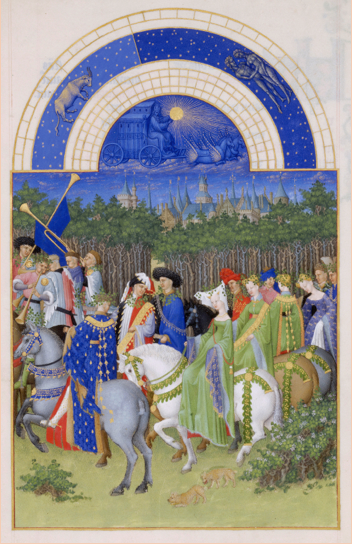
Limbourg Brothers, May calendar page from “Les Très Riches Heures du Duc de Berry”
(The Duke of Berry’s Very Fine Book of Hours), ca. 1412-1416. Ms. 65, Musée Condé, Chantilly, France.
O the month of May, the merry month of May,
So frolic, so gay, and so green, so green, so green!
O, and then did I unto my true love say:
"Sweet Peg, thou shalt be my summer's queen!
Now the nightingale, the pretty nightingale,
The sweetest singer in all the forest's choir,
Entreats thee, sweet Peggy, to hear thy true love's tale;
Lo, yonder she sitteth, her breast against a brier.
But O, I spy the cuckoo, the cuckoo, the cuckoo;
See where she sitteth: come away, my joy;
Come away, I prithee: I do not like the cuckoo
Should sing where my Peggy and I kiss and toy."
O the month of May, the merry month of May,
So frolic, so gay, and so green, so green, so green!
And then did I unto my true love say:
"Sweet Peg, thou shalt be my summer's queen!"
Another favourite poem of mine is Corinna's Going A-Maying BY Robert Herrick, which celebrates the old English custom of young couples marking May Day by going out into the fields and woods around their villages, excursions that frequently ended up in marriages. Herrick's Corinna is portrayed as a latter-day Flora, goddess of flowers, spring and fertility, whose mere passing causes the village streets to turn to fields of blossom.

Village Scene With Dance Around the Maypole – Pieter Bruegel, the Elder (1634)
Corinna's Going A-Maying
‘Get up, get up for shame, the Blooming Morne
Upon her wings presents the god unshorne.
See how Aurora throwes her faire
Fresh-quilted colours through the aire:
Get up, sweet-Slug-a-bed, and see
The Dew-bespangling Herbe and Tree.
Each Flower has wept, and bow'd toward the East,
Above an houre since; yet you not drest,
Nay! not so much as out of bed?
When all the Birds have Mattens seyd,
And sung their thankful Hymnes: 'tis sin,
Nay, profanation to keep in,
When as a thousand Virgins on this day,
Spring, sooner than the Lark, to fetch in May.
Rise; and put on your Foliage, and be seene
To come forth, like the Spring-time, fresh and greene;
And sweet as Flora. Take no care
For Jewels for your Gowne, or Haire:
Feare not; the leaves will strew
Gemms in abundance upon you...':-Continue and read the entire poem
Following Corinna's Going A-Maying, my second Herrick’s poem is 'The May-Pole', which marks another old English custom, the putting up of poles on village greens for the local maidens to dance around. The implicit connection with fertility is made explicit in the final line of the poem, when Herrick calls on the dancers, once they wed, to "multiply all, like to fishes".*
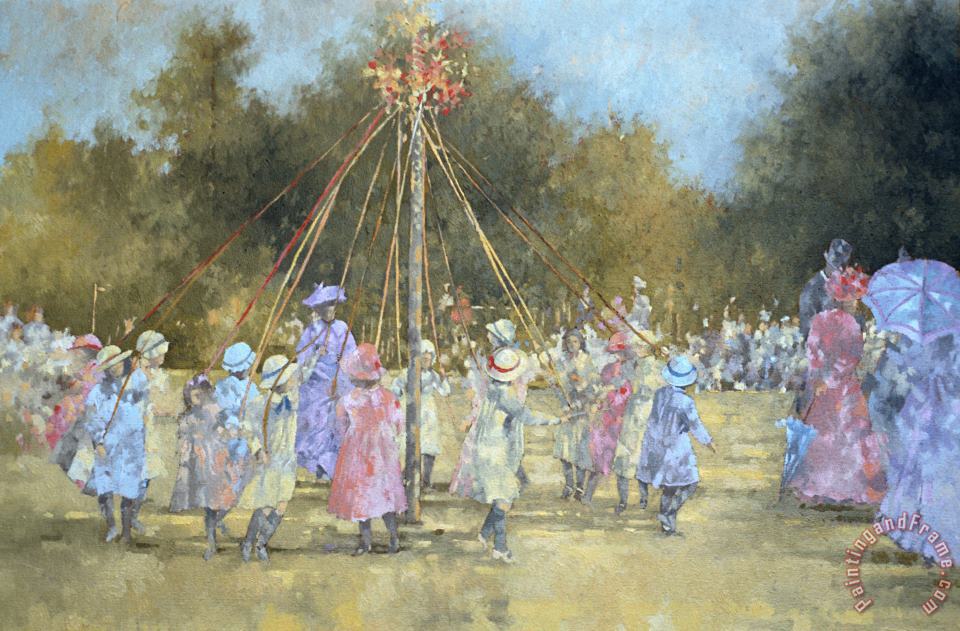
The Maypole by Peter Miller
‘THE May-pole is up,
Now give me the cup,
I'll drink to the garlands around it ;
But first unto those
Whose hands did compose
The glory of flowers that crown'd it.
A health to my girls,
Whose husbands may earls
Or lords be, granting my wishes,
And when that ye wed
To the bridal bed,
Then multiply all, like to fishes.’

Photo: Catholic News World
At this point, I should mention that although many May poems are bound up with an essentially pagan view of the month; fertility and physical love, we should not forget that ‘for Christians May is the month of Mary, a connection that lies behind one of the finest of all May poems, Gerard Manley Hopkins' The May Magnificat’, a poem that bridges the theological and pagan worlds with an elegant span.’*
May Magnificat
May is Mary's month, and I
Muse at that and wonder why:
Her feasts follow reason,
Dated due to season—
Candlemas, Lady Day;
But the Lady Month, May,
Why fasten that upon her,
With a feasting in her honour?
Is it only its being brighter
Than the most are must delight her?
Is it opportunest
And flowers finds soonest?
Ask of her, the mighty mother:
Her reply puts this other Question:
What is Spring?—
Growth in every thing—
Flesh and fleece, fur and feather,
Grass and greenworld all together;
Star-eyed strawberry-breasted
Throstle above her nested
Cluster of bugle blue eggs thin
Forms and warms the life within;
And bird and blossom swell
In sod or sheath or shell.
All things rising, all things sizing
Mary sees, sympathising
With that world of good,
Nature's motherhood.
Their magnifying of each its kind
With delight calls to mind
How she did in her stored
Magnify the Lord.
Well but there was more than this:
Spring's universal bliss
Much, had much to say
To offering Mary May.
When drop-of-blood-and-foam-dapple
Bloom lights the orchard-apple
And thicket and thorp are merry
With silver-surfed cherry
And azuring-over greybell makes
Wood banks and brakes wash wet like lakes
And magic cuckoocall
Caps, clears, and clinches all—
This ecstasy all through mothering earth
Tells Mary her mirth till Christ's birth
To remember and exultation
In God who was her salvation.
……
A Selection of Related postings from our archive
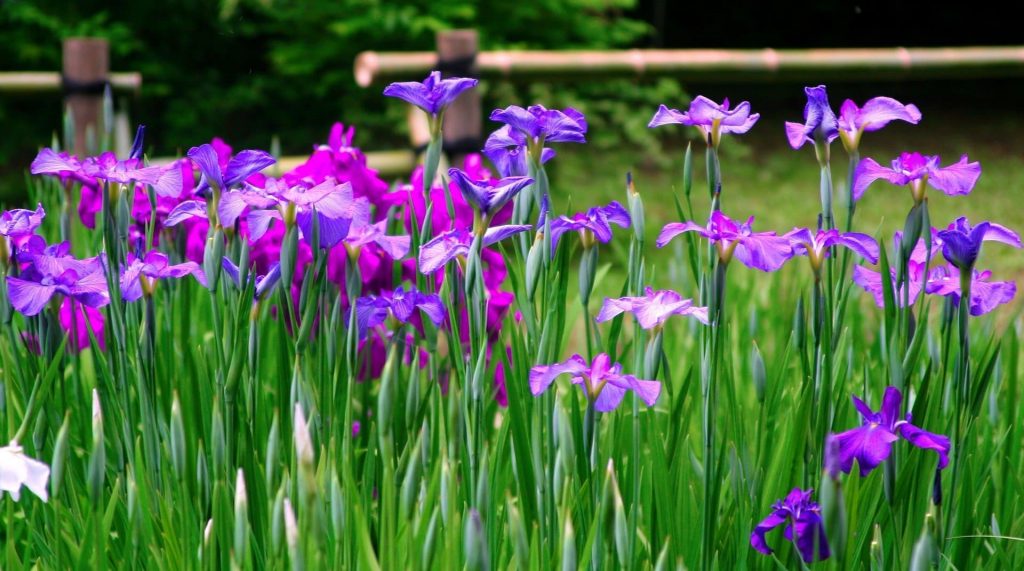
Photo:PetalRepublic
Celebrating the joyous Spring with Hopkins and Wordsworth
Finding sanctuary in poetry during lockdown
Reflecting on Life: My Childhood in Iran where the love of poetry was instilled in me
Poetry is the Education that Nourishes the Heart and Nurtures the Soul
GCGI Celebrates the World Poetry Day
My Poem of the month (January) and our New Year’s Greetings
My Poem of the month (February): Let Hope and Healing Begin to Brighten the Covid Darkness
My poem of the Month: Springing back in April with a Renewed Sense of Hope and Optimism
My Poem of the month (October): MORḠ-E SAḤAR (Bird of Dawn)
My Poem of the month (November): Reimagined Garden
My Poem of the month (December): The Emerging of a New Consciousness and Hopefulness
……
